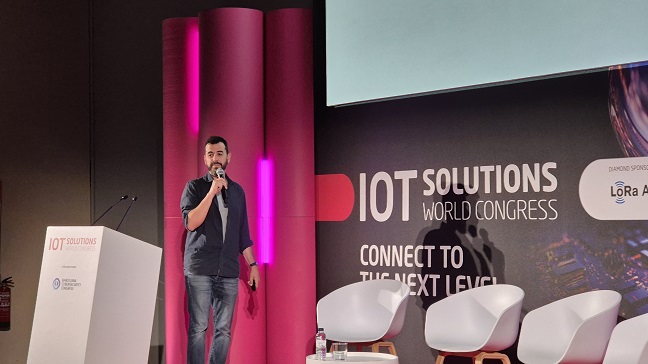LIVE FROM IOT SOLUTIONS WORLD CONGRESS, BARCELONA: A senior engineer warned regulation is the elephant in the room for AI, highlighting greater controls being implemented in the European Union and US are set to make life harder for companies employing the technology, but equally present a strong revenue opportunity for those which get it right.
Sergi Mansilla, SVP of engineering at edge AI platform provider Edge Impulse (pictured), also delivered a reality check on the capabilities of generative iterations of the technology by noting it is not yet smart enough to be let loose in all circumstances.
The expert predicted regulatory compliance plans will require companies to “prove that your model has a verifiable behaviour and that is has explainability”, two “different concepts that are going to be crucial”.
Companies will need to know “what decisions your model is going to make” and be able to trace this.
“That is a lot of work.”
Equally, though, Mansilla believes there is “a lot of money to be made” by companies which can prove their model works properly.
Critical decisions
Mansilla noted AI is beginning to become a viable option for edge devices, but he believes it is too soon to fully entrust the technology with handling all decisions.
He said generative AI (genAI) is still not accurate enough to go it alone in critical industries and device costs remain a concern, albeit one which will largely resolve itself as typical economies of scale arising from volume business models start coming into play.
Mansilla explained Edge Insight reaps benefits from genAI in terms of context, providing “more information on what’s going on”, but added the company does not allow the system to make its own decisions.
He noted even the most well-known genAI set-ups can hallucinate and was unequivocal about its use in critical industries: “you don’t want to touch it if you’re making decisions on healthcare or industry”.
Mansilla was not adopting a luddite stance, though, noting AI is making progress and becoming a viable option for edge devices, particularly as the devices themselves gain greater processing power to enable them to harness the full potential of the technology.
Equally, progress is being driven by a reduction in the number of operations edge devices must process, meaning today “you need less compute” to deliver the same performance as units released six years ago.
